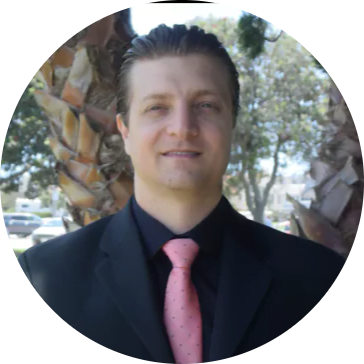Last Updated on: 10th December 2025, 05:54 am
In this article, you will find information about the causes, signs and symptoms, diagnosis, treatment, and prevention of dental bone graft infection. However, there are other complications such as exposure of the regeneration material, loss of this material, and allergic reaction, among others, which will be explained in another section.
Dental bone grafting or bone regeneration surgery is a frequently performed procedure, particularly during dental implant placement. This surgical technique involves an expert placing bone material in the jawbone or mandible to restore or regenerate areas where bone loss or damage has occurred, enhancing support for the dental implant. This information is relevant when considering the dental implant procedure.
Usually, it is a safe procedure with a high probability of success, but there is a risk of infection that can be serious and cause complications if not treated in time.
Causes of Dental Bone Graft Infection
Bone regeneration surgery requires multiple care during and after the procedure. The main causes of infection are:
1. Use of infected bone graft material
2. Use of contaminated surgical instruments
3. Incorrect surgical technique
4. Pre-existing uncontrolled periodontal disease
5. Poor postoperative care
The dentist must ensure to sterilization of all the instruments that will be used in the surgery and have the office and materials that will be used clean and disinfected. Additionally, the dentist should follow the correct protocol for the placement of the bone graft, which includes a thorough clinical examination and, if necessary, laboratory tests to confirm that the patient is suitable for this treatment.
The patient must commit to following all the indications given by the specialist, as the most common cause of infection is a poor postoperative oral care routine.
Signs and Symptoms
After surgery, it is normal to experience pain, swelling, and discomfort for a few days. If these symptoms persist, it could indicate the formation of an infectious process.
The main signs and symptoms of an infection associated with a dental bone graft are:
1. Pain: Usually, pain can last up to 4 days after bone graft surgery. If after 3 or 4 days, there is a presence of sharp or radiating pain to other parts of the mouth, an infection has likely developed.
2. Swelling and redness: A little inflammation is normal during the first few days, but if after 3 or 4 days, swollen and bleeding gums with redness are observed, they may be warning signs of an infection.
3. Pus discharge: The inflammation may be accompanied by whitish-yellowish pus and a bitter or salty taste in the mouth.
4. Sinusitis: If, after bone graft surgery, specifically in the upper jaw, you start to suffer from multiple allergies and are diagnosed with sinusitis, an infection in which the lining of the nasal sinus at the site of the bone graft may have ruptured is likely.
5. Dental sensitivity: The root of the tooth continuous to the area where the bone graft is placed may present sensitivity, pain, or discomfort due to an infectious process.
Other common symptoms of an infection
• Persistent bad taste in the mouth
• Bad breath
• Fever or increased body temperature
• Persistent and painful throbbing in the area of the bone graft that lasts for more than a few days
Diagnosis and Treatment
If you have one or more of the symptoms described after having a bone graft surgery, it is recommended to consult a dentist. The professional will perform a clinical evaluation, and in some cases may require X-rays to determine if there is an infection and how advanced it is and establish the best treatment in each case.
Treatment options depend on the severity level of the infection.
1. An infection in its initial state can be treated with antibiotics. They are generally prescribed for 5 to 7 days, and the complete regimen must be taken, even if you feel improvement before the prescribed time.
2. In severe cases of infection, surgery should be performed to remove the graft and infected bone tissue; clean the area, wait for 2 to 3 months for the body to recover, and then place a new graft.
3. When a dental implant has already been placed and an infection occurs, this is called Peri-implantitis. Treatment consists of a deep cleaning of the implant to mechanically remove the tartar that has formed around it, and possibly replace the bone tissue lost due to the infection. If it is too advanced, the implant must be removed.
How to Prevent Dental Bone Graft Infection?
You should follow the recommendations of your specialist, which may include:
• Avoiding smoking or consuming alcohol, coffee, or highly spiced foods
• Avoiding dairy products for a while, as they may contain bacteria that can harm the graft
• Maintaining good oral hygiene, including the use of medicated mouthwashes
• Avoiding brushing the area for at least 2 weeks
Some home remedies that may help with the healing process after surgery and prevent infection
1. Warm saltwater rinses: Rinse your mouth with warm salt water 4 or 5 times a day.
2. Baking soda: Dissolve baking soda in water and rinse your mouth with it.
3. Aloe vera: Apply a small amount directly to the area or prepare a juice and rinse your mouth with it.
4. Honey: Apply natural honey directly to the site of the infection.
5. Hydrogen peroxide: Mix equal parts hydrogen peroxide and water, rinse your mouth with the mixture, and spit it out.
Dental bone graft surgery is an excellent option when you have lost maxillary or mandibular bone and need to recover it. It requires multiple care, but the success rate is high, and is an ideal treatment option in most cases.
For more information on this topic, please see the “Dental bone graft” article on our website, which provides detailed information on what it is, the procedure for placing it, the types of bone available, and much more.
Share:
References
1. Bone Grafting: What It Is, Types, Risks and Benefits. (Reviewed: August 9, 2021). Cleveland Clinic. https://my.clevelandclinic.org/health/treatments/16796-bone-grafting
2. Dental Bone Graft: Process, Healing & What It Is. (Reviewed: September 27, 2021). Cleveland Clinic. https://my.clevelandclinic.org/health/treatments/21727-dental-bone-graft
3. Dental implant surgery – Mayo Clinic. (January 29, 2019). https://www.mayoclinic.org/tests-procedures/dental-implant-surgery/about/pac-20384622
4. Elakkiya, S., & Prabhu, K. (2017). Systematic analysis on the efficacy of bone enhancement methods used for success in dental implants. The Journal of Indian Prosthodontic Society, 17(3), 219. https://journals.lww.com/jips/fulltext/2017/17030/systematic_analysis_on_the_efficacy_of_bone.2.aspx
5. Roland, J. (January 5, 2021). What You Need To Know About A Dental Bone Graft. Healthline. https://www.healthline.com/health/dental-bone-graft
6. Thomas, M., & Puleo, D. A. (2011). Infection, Inflammation, and Bone Regeneration: a Paradoxical Relationship. Journal of Dental Research, 90(9), 1052-1061. https://journals.sagepub.com/doi/10.1177/0022034510393967
-
Nayibe Cubillos M. [Author]
Pharmaceutical Chemestry |Pharmaceutical Process Management | Pharmaceutical Care | Pharmaceutical Services Audit | Pharmaceutical Services Process Consulting | Content Project Manager | SEO Knowledge | Content Writer | Leadership | Scrum Master
View all posts
A healthcare writer with a solid background in pharmaceutical chemistry and a thorough understanding of Colombian regulatory processes and comprehensive sector management, she has significant experience coordinating and leading multidisciplina...




















